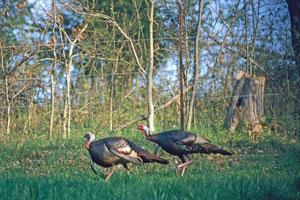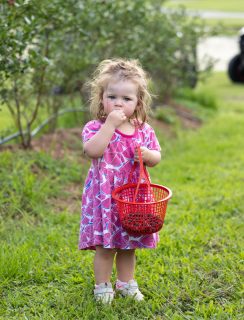Kentucky Afield Outdoors: Best turkey season in a decade predicted; general season opens April 17
Published 12:00 am Thursday, April 1, 2010

- Spring turkey season opens April 17 and closes May 9. This should be an excellent spring turkey season with many vocal 2-year-old gobblers in the flock based on record turkey reproduction in 2008. Young gobblers are curious and vocalize often, but avoid using your call too much as this may put them on guard. A gobbler usually knows your location after just one calling series.
When Kentucky’s spring wild turkey season opens April 17, hunters can expect to find a bounty of gobblers.
“It’s looking like one of the best seasons in the past eight to 10 years,” said Steven Dobey, wild turkey biologist for the Kentucky Department of Fish and Wildlife Resources. “There will be lots of 2-year-old birds, and they do most of the gobbling.”
Kentucky’s 23-day spring wild turkey season closes on Sunday, May 9. The youth-only weekend, for hunters under age 16, is April 3-4.
Record reproduction in 2008 is the reason for all the optimism for the upcoming spring season. “It was a great hatch,” said Dobey. “The conservation officers and wildlife biologists who took part in our annual brood survey observed an average of 3.7 poults (turkey chicks) per hen, and the highest ever total number of poults.”
Kentucky’s wild turkey flock now numbers about 220,000. Approximately 90,000 people hunt turkeys in Kentucky.
Last year, hunters took 29,007 bearded turkeys during Kentucky’s spring season, a new record. That represents an increase of 10,764 birds over just a decade ago.
“We have a very stable percentage of adult gobblers in the harvest,” said Dobey. “That’s something turkey managers like to see.”
During the 2006-08 seasons, the average percentage of adult gobblers in the harvest was 84 percent. It dropped to 76 percent last spring because hunters took advantage of the large numbers of one-year-old male turkeys – hunters call these birds “jakes” – available from the reproductive boom of 2008. “Over time the percentage of jakes in the harvest has decreased, due in large part to Kentucky hunters becoming more selective, preferring to take older birds,” said Dobey.
Since wild turkey restoration began about 25 years ago, Kentucky’s flock has grown to become one of the best in the region.
“Of the seven states surrounding Kentucky (Missouri, Illinois, Indiana, Ohio, West Virginia, Virginia and Tennessee), we tied for first place in 2009 (with Tennessee) in the number of birds harvested per square mile,” said Dobey. “That quite an accomplishment considering Tennessee has a much longer season and (hunters can take) double our bag limit.”
High-quality populations of wild turkeys are present in all 120 Kentucky counties.
Wild turkeys flourish in a mix of open land and forest. They need large timber for roosting, and depend on acorns and other hard mast as a seasonal food source. “Landowners often overlook the importance of nesting habitat,” said Dobey. “Good nesting areas are stands of hardwood trees, with moderate understory, or overgrown fields that provide concealment and cover from the elements.”
Although most hunting occurs on farms and woodlands owned by individuals – about 95 percent of the state is privately owned – good hunting can also be found on state and federal lands.
Land Between the Lakes and Peabody Wildlife Management Area (WMA) offer good hunting in western Kentucky. A top spot in the Bluegrass Region is Taylorsville Lake WMA. Grayson Lake WMA gets the nod in northeastern Kentucky.
Southeastern Kentucky, because of its mountainous terrain and large tracts of public land, has excellent potential for the adventurous hunter. “There’s much less hunting pressure, and lots of birds,” said Dobey. “It’s worth the extra effort of climbing those hills.”
Top public lands in southeastern Kentucky include Begley WMA, Daniel Boone National Forest and Lake Cumberland WMA. Last spring, hunters took 526 wild turkeys in Daniel Boone National Forest, which encompasses more than 700,000 acres of public land.
Overall, hunters took more than 6,600 turkeys within the 28 counties of the southeastern region of Kentucky – second in the state. Hunters in the 25-county Green River region took more than 8,500 turkeys last year, the top region in the state.
The season limit during the spring is two bearded turkeys a hunter, but hunters can only take one bird a day. Any wild turkey with a visible beard may be taken, including bearded hens.
Hunting over bait, such as grain, seed or manufactured animal feed, is illegal. Feeding wildlife outside the curtilage of the home, basically the area immediately surrounding a home or group of homes, is illegal from March 1 through May 31.
While using a locator call such as crow or owl call is legal prior to the season, it is illegal for hunters to mimic the sounds of a wild turkey from March 1 until opening day of the spring season, when within earshot of birds.
For complete regulations regarding Kentucky’s spring wild turkey season visit the Kentucky Department of Fish and Wildlife Resources website at fw.ky.gov, or pick up a copy of the spring turkey hunting guide whenever hunting licenses are sold.
Author Art Lander Jr. is a former outdoors writer for the Lexington Herald-Leader. He is an information specialist in the Kentucky Fish and Wildlife Information Center.
The Kentucky Department of Fish and Wildlife Resources manages, regulates, enforces and promotes responsible use of all fish and wildlife species, their habitats, public wildlife areas and waterways for the benefit of those resources and for public enjoyment. Kentucky Fish and Wildlife is an agency of the Tourism, Arts and Heritage Cabinet. For more information on the department, visit our web site at fw.ky.gov.





